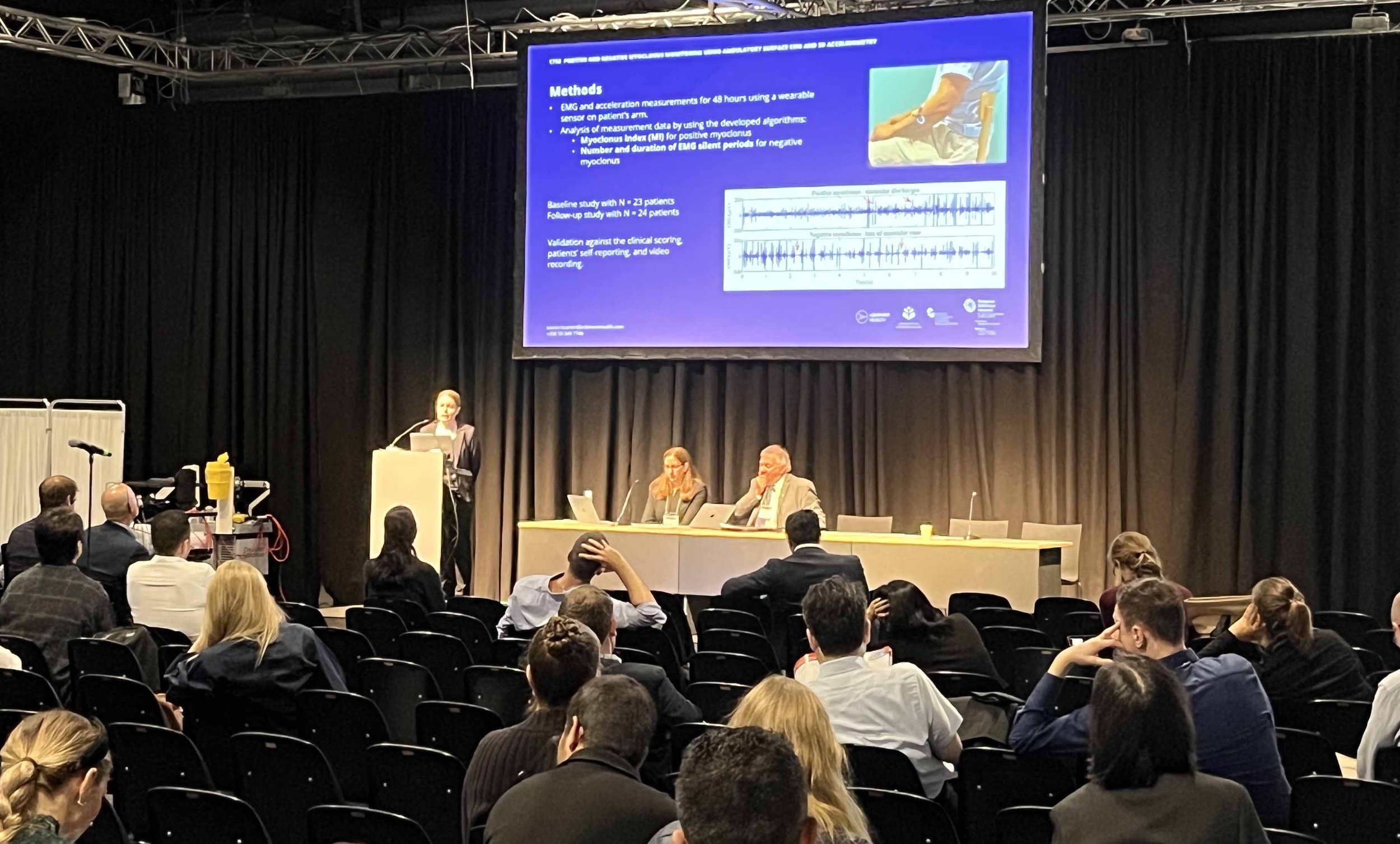Adding technology to tradition: the new gold standard for assessing Parkinson’s disease
We’ve just returned from this year’s International Congress of Parkinson’s Disease and Movement Disorders in Copenhagen and are strongly encouraged by the valuable and in-depth discussions we had there.
The scientifically renowned congress once again drew thousands of neurologists, clinicians and other healthcare professionals from around the world to meet in person. They had the opportunity to share the latest on current research and approaches for the diagnosis and treatment of movement disorders and learn about the progress in the different fields. In addition, participants learned about the latest state-of-the-art technology that could be applied to treat and manage various movement disorders.
Our Chief Scientist Saara Rissanen held a presentation in one of the oral platform sessions and presented a poster describing how to take advantage of technology when evaluating movement disorders. In addition, we were present with a booth in the exhibition area for the first time ever.
Validated technology and results
Our well-attended oral presentation as well as poster focused on Adamant Health’s main differentiating factor – how to add measurable accuracy using surface electromyography (EMG) and 3D accelerometry to the industry’s gold standard of in-clinic evaluation.
We were very pleased to see that there was a lot of interest in our technology. Conference participants were keen to find out more about what is possible with our technology and how it differentiates from measurement with 3D accelerometry only.
Although our abstract focused on the technology used for positive and negative myoclonus monitoring in patients with progressive myoclonus epilepsy type 1 (EPM1), the same method has been used with Parkinson’s disease.
Saara Rissanen also presented validation results from two different patient studies. The first baseline study was carried out in 2019. In a follow-up validation study done in 2020, we proved we could reproduce strong and significant results compared to the clinical scoring – demonstrating that our technology succeeded in evaluating the myoclonus objectively.
Technology brings clarity of symptoms
Traditionally, in-clinic evaluation uses rating scales such as the Unified Myoclonus Rating Scale (UMRS) or the Unified Parkinson’s Disease Rating Scale (UPDRS) to provide an assessment of a movement disorder. Although clinical scoring has become an internationally recognized golden standard in the industry, the method is subjective and looks only at the point in time when the patient is at the clinic.
Still, patients suffer from varying symptoms during the day and night. And the symptoms can often be different at home than in the clinic.
Our technology, based on wearable surface EMG and 3D accelerometry, adds clinically meaningful data to the existing evaluation method by analyzing muscle activity and movement over a longer period of time. This gives an accurate insight into the patients’ condition and a clear picture of their symptoms.
Compared to solutions using motion sensors, our technology and solution measures and analyses both motion and neuromuscular activity.
Creating a new industry gold standard
A surprise was that EMG is relatively unknown when it comes to its benefits of bringing accuracy and clarity to the measurement of movement disorder symptoms and providing clinically meaningful and actionable data to clinicians.
We feel it is absolutely key to continue educating the market about the EMG signal’s role in quantifying the neurophysiological basis of motor symptoms and why it provides a more accurate picture. The “why” is precisely because of the EMG signal itself and the resulting data points.
Combining the accuracy of symptom measurement and a data-driven approach to the current clinical gold practice helps neurologists and general practitioners improve their capabilities in making more informed treatment decisions.
We are open to partnering with other technology providers and the conventional approach to help create a new gold standard for the entire market. We see immense value in using technology to improve the cost efficiency of disease treatment and allow patients suffering from movement disorders to lead better lives.
Technology brings clarity – and helps objectively measure Parkinson’s disease and other movement disorder symptoms. The use of technology can advance the entire industry and revolutionize the care of patients with Parkinson’s disease.
To learn more about our technology and service, please contact us.

